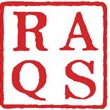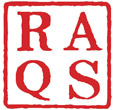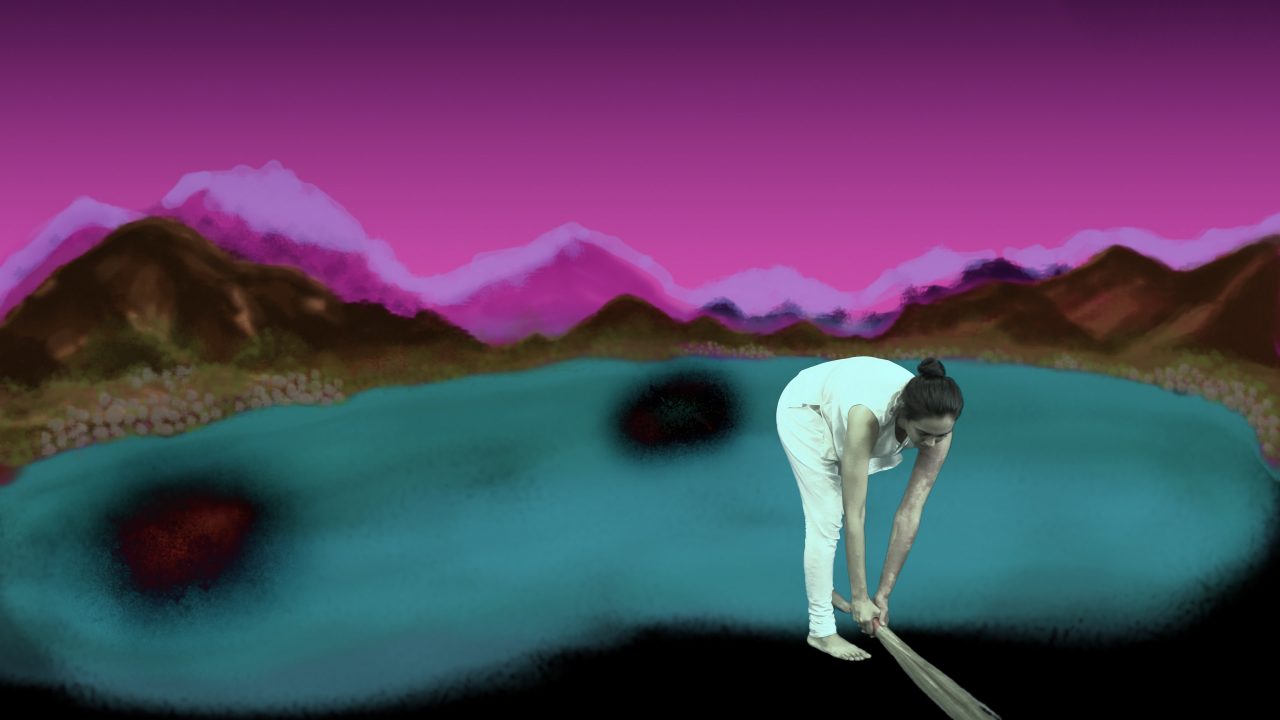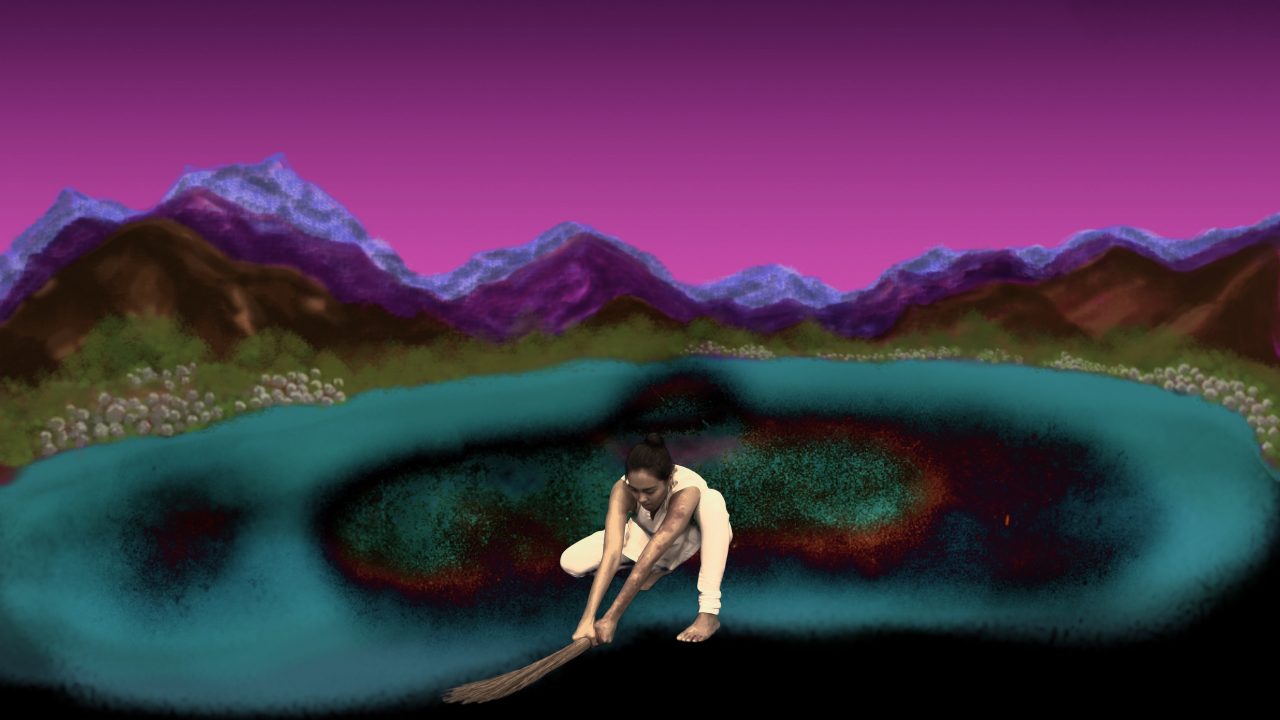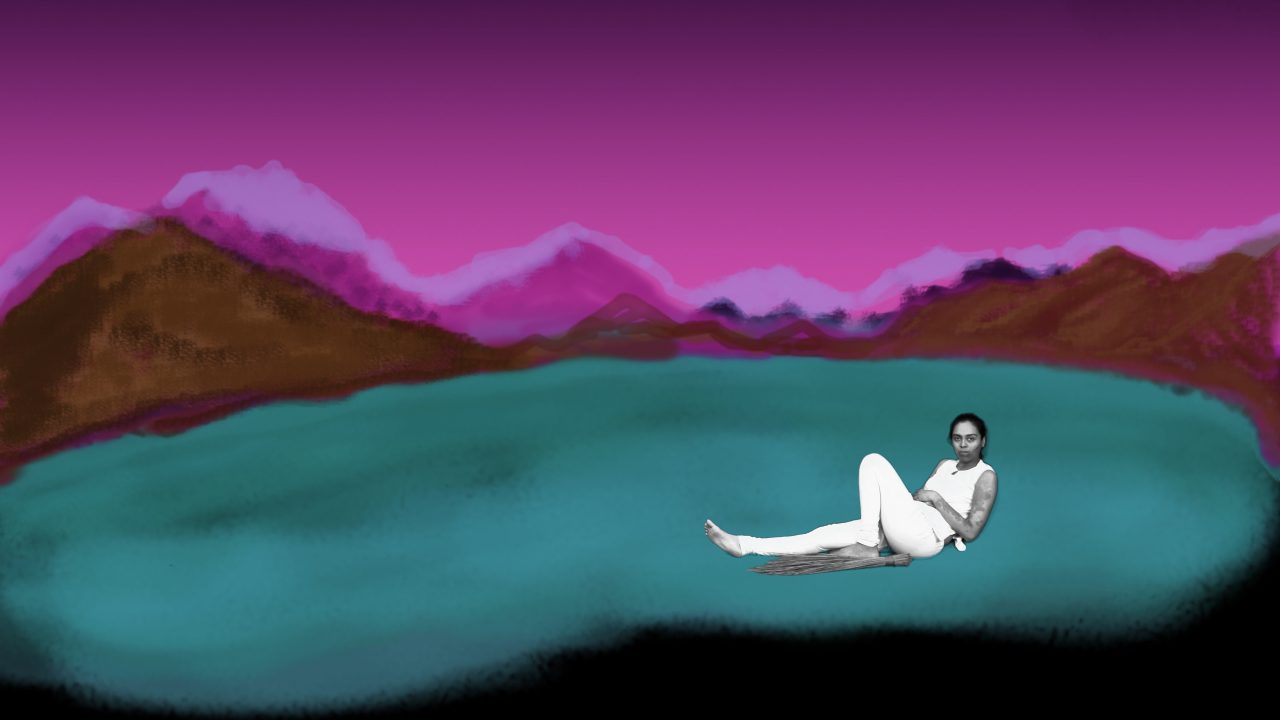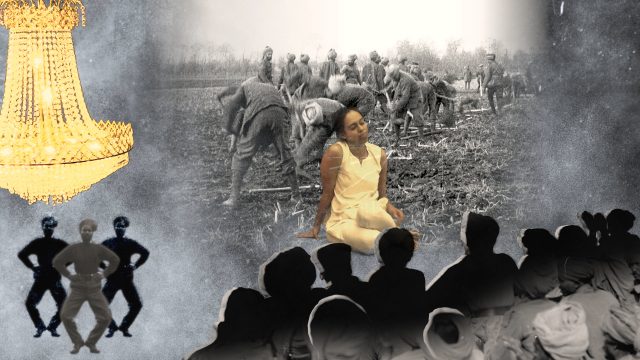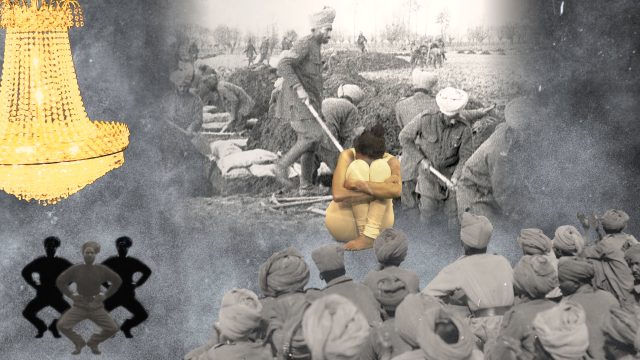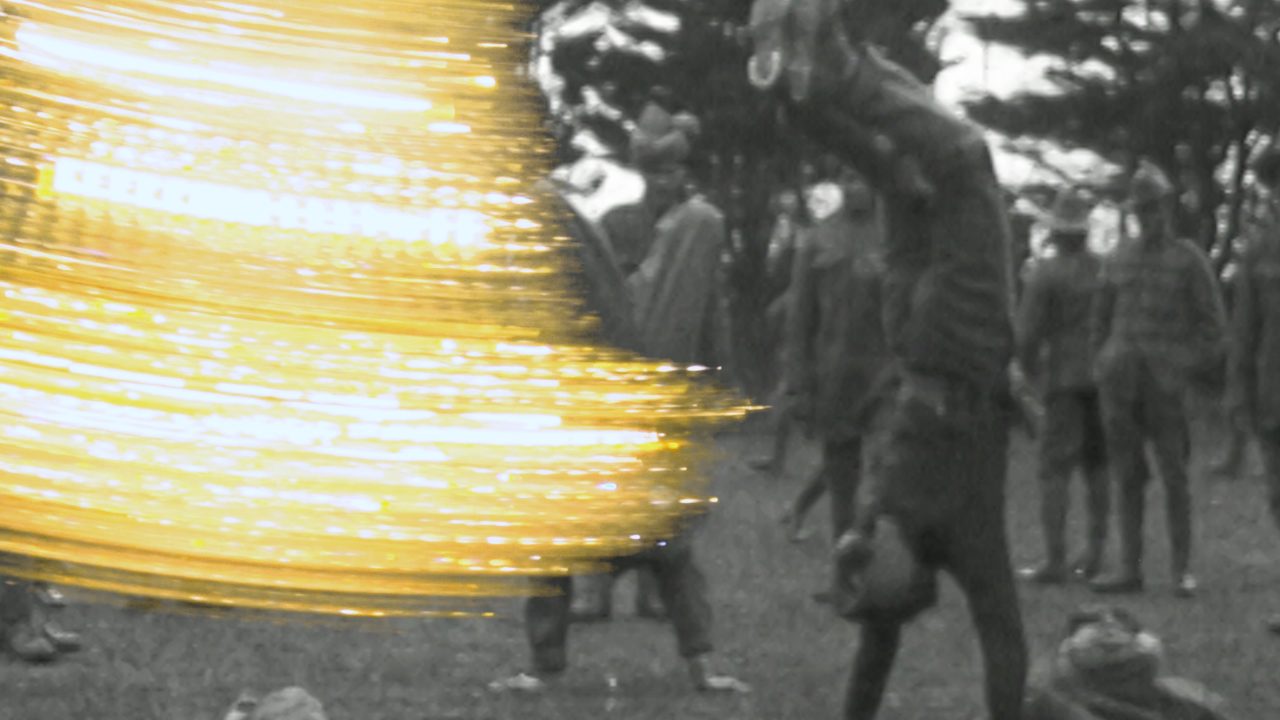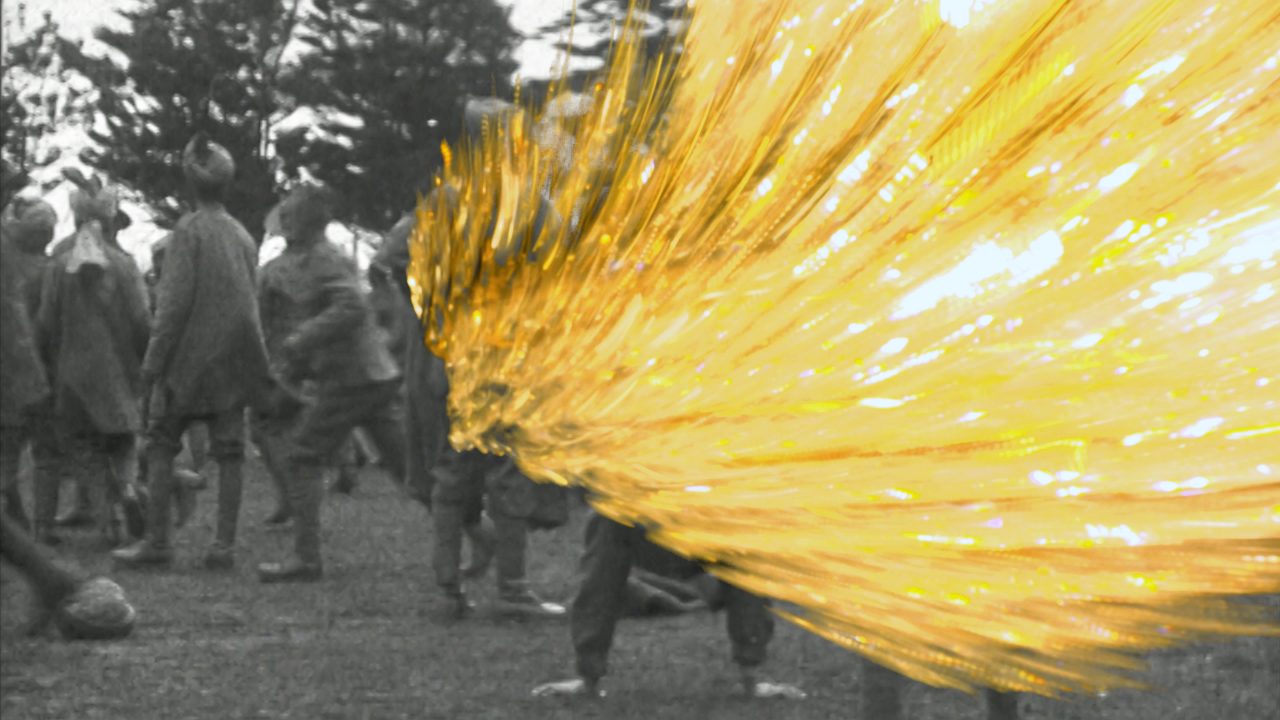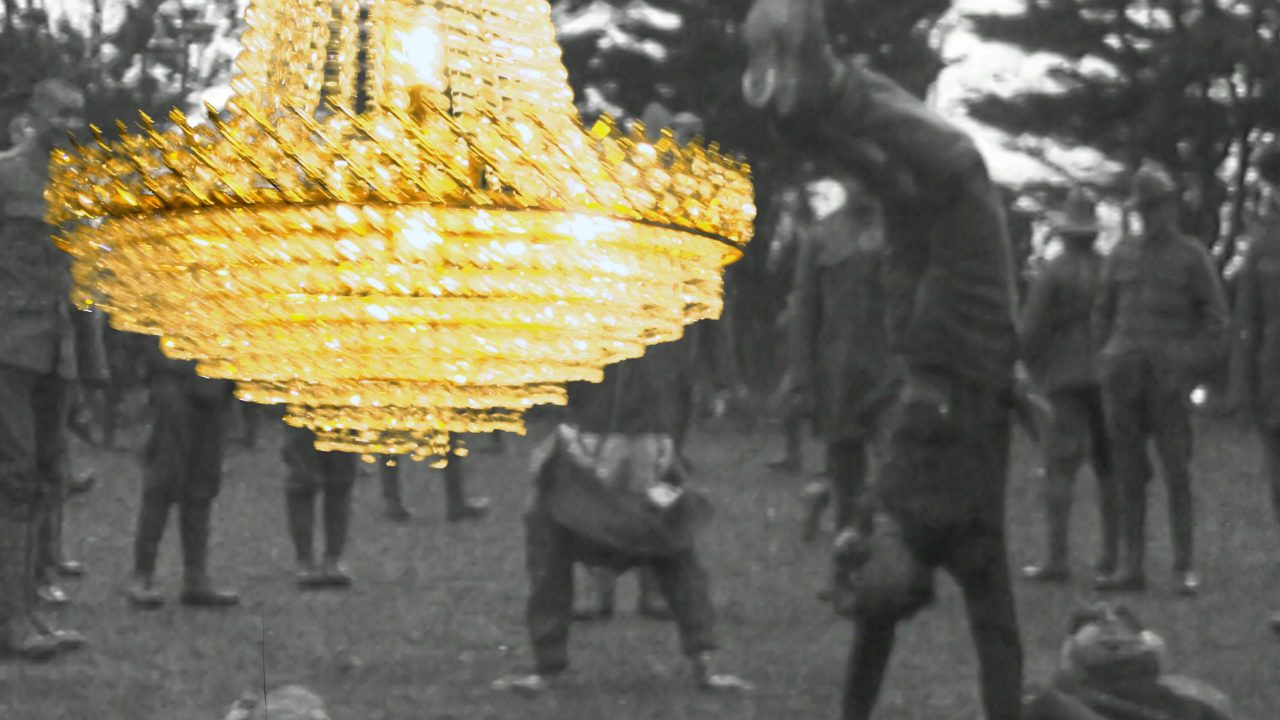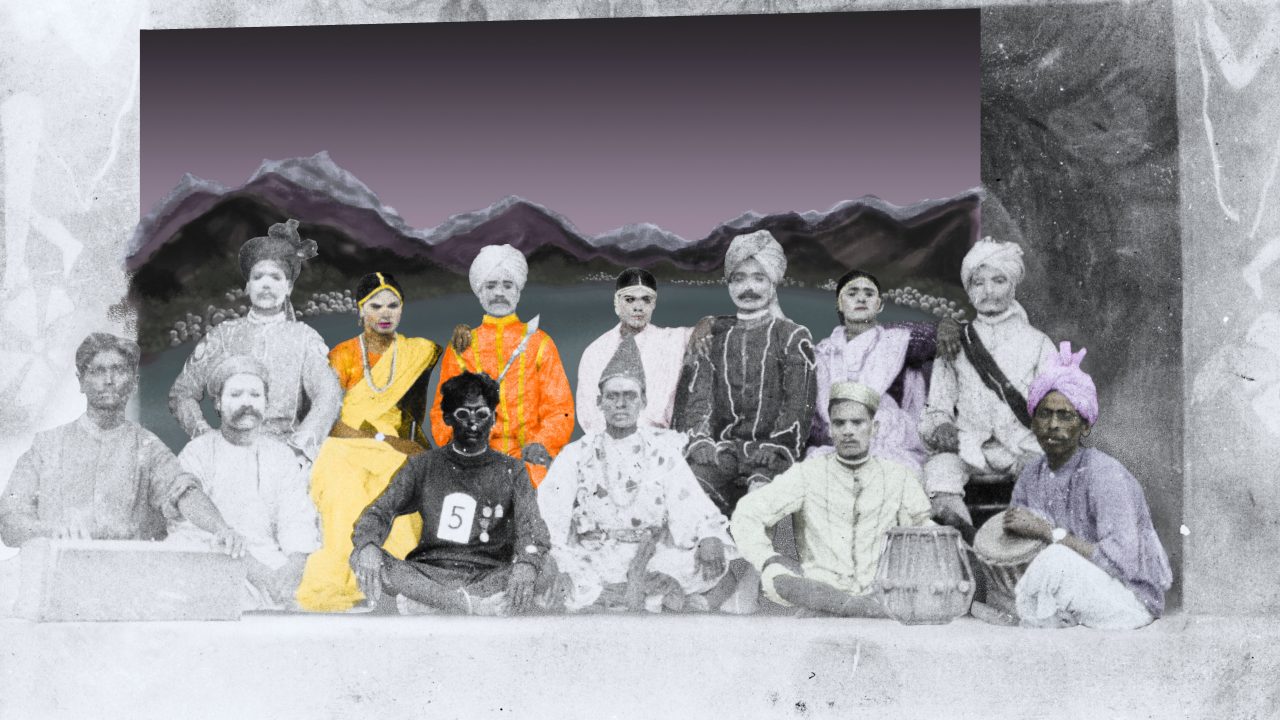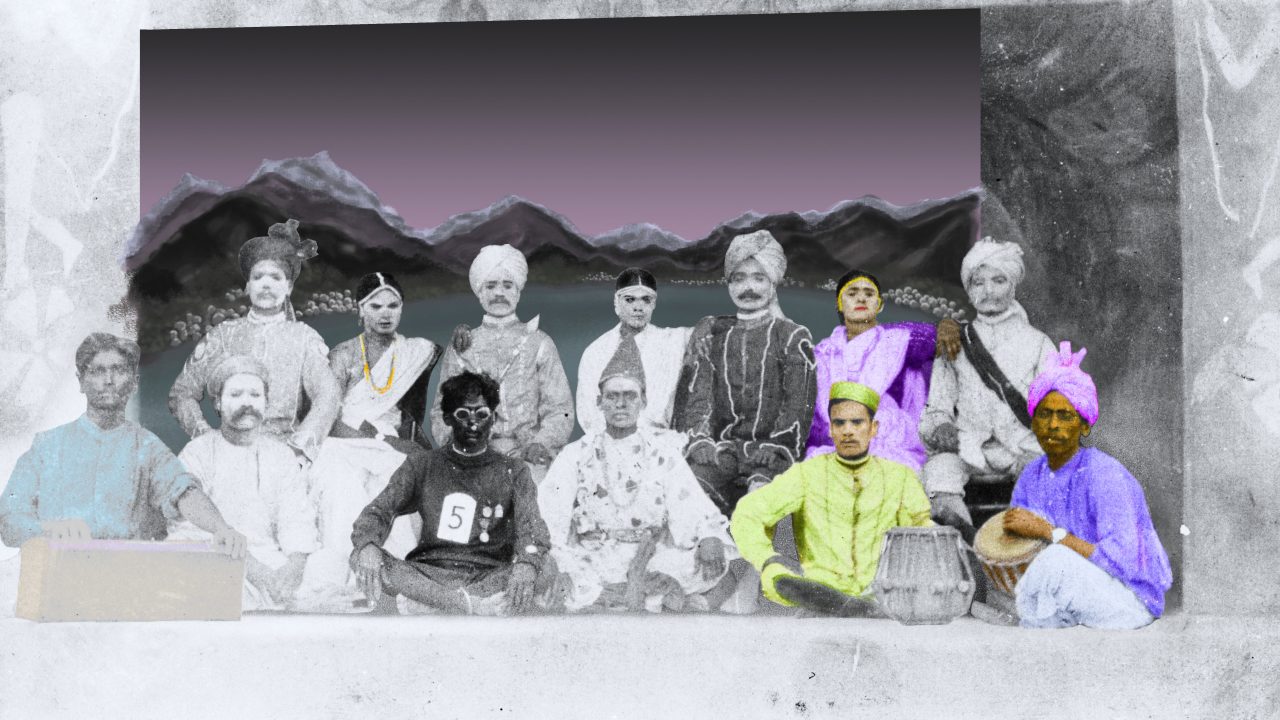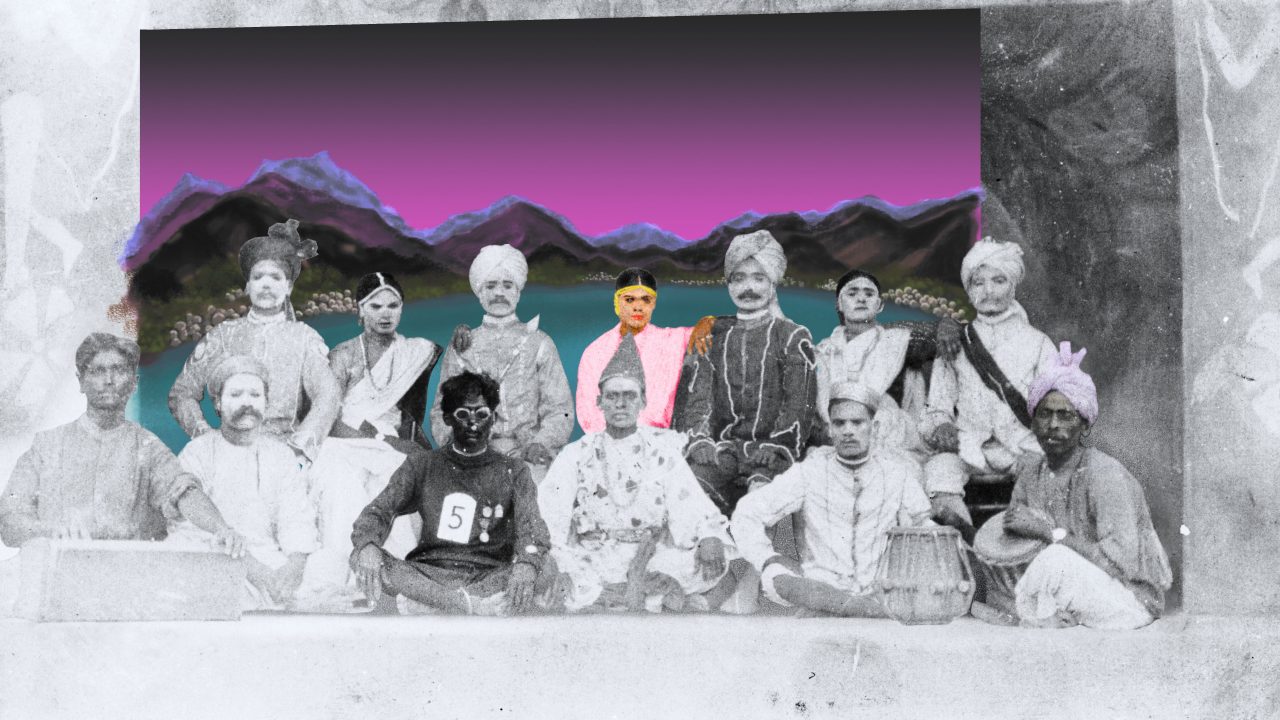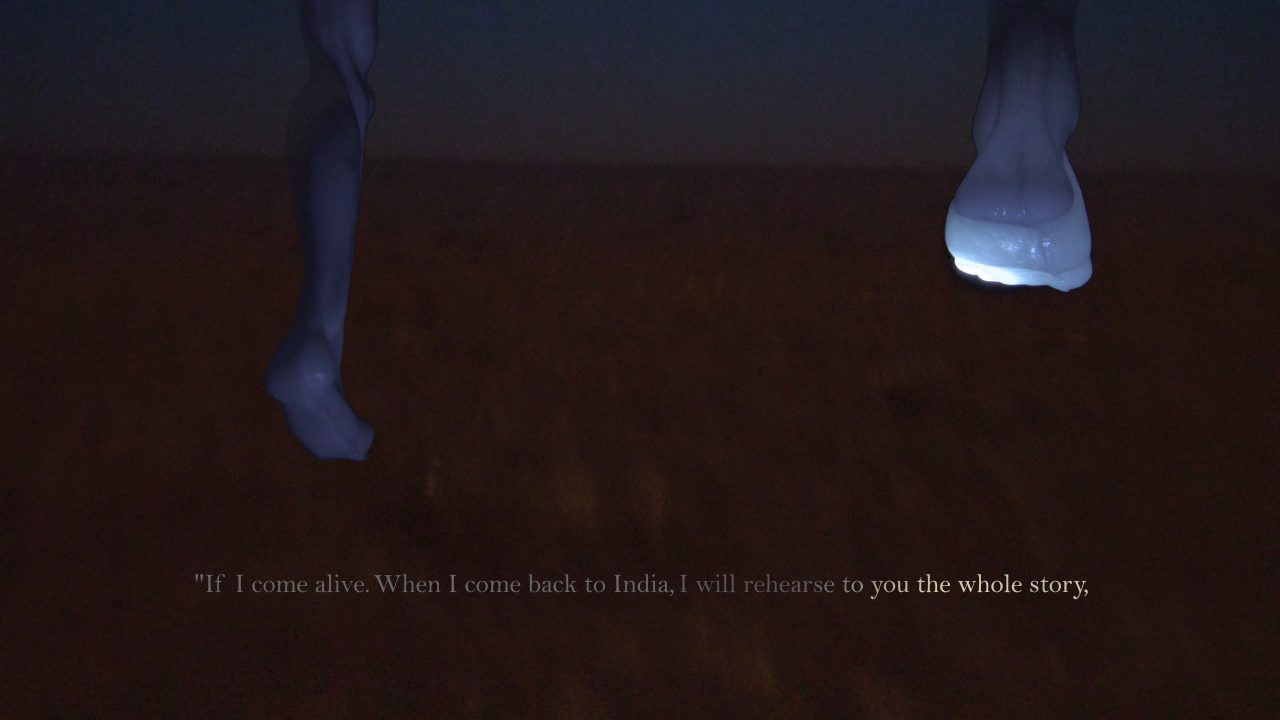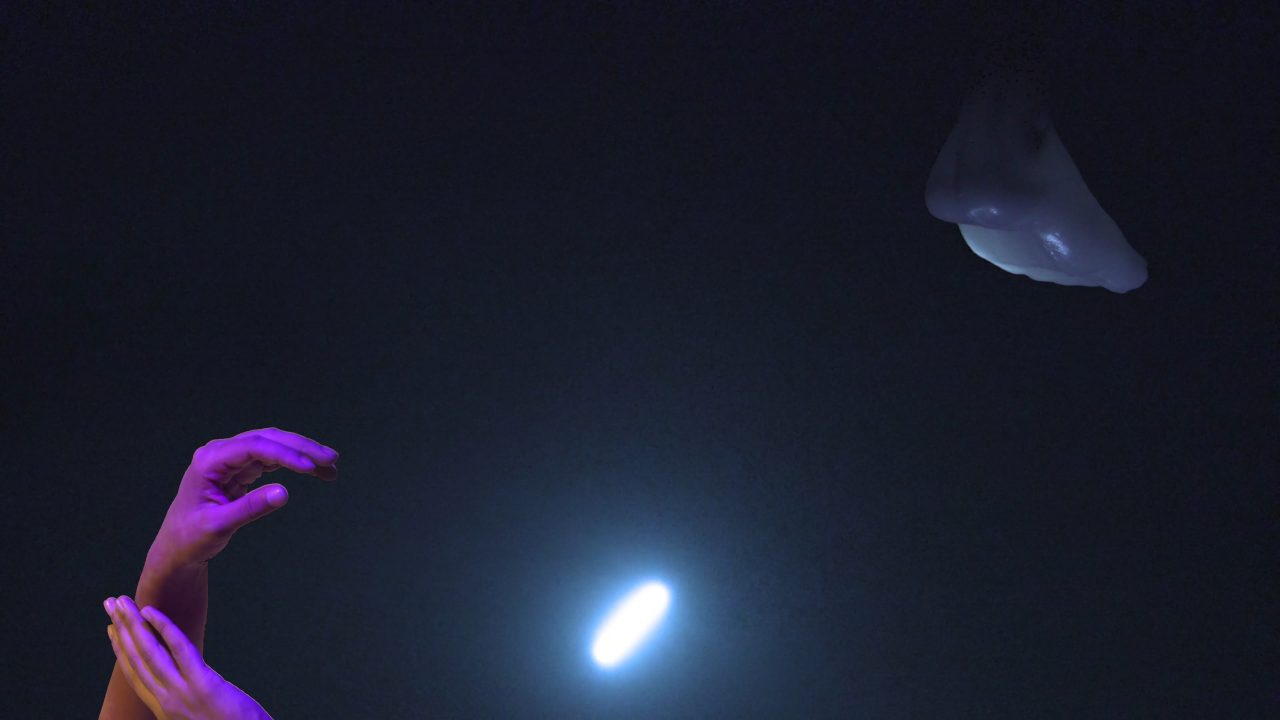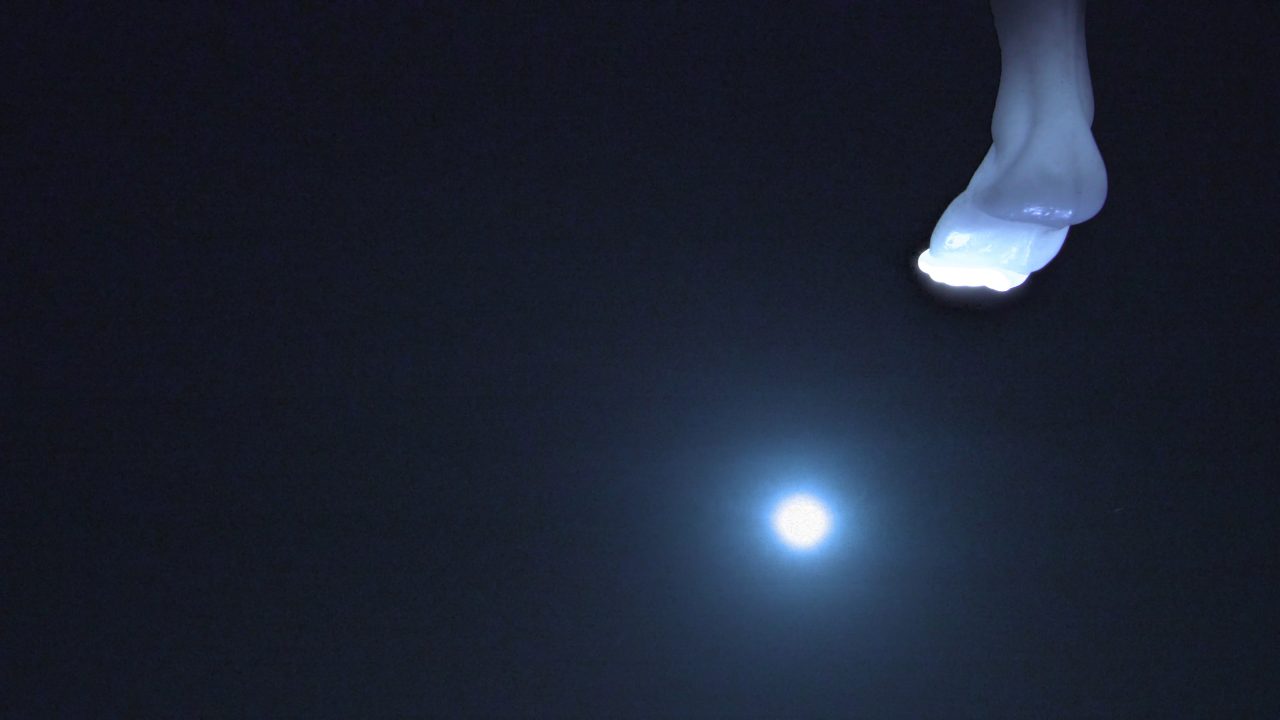Not Yet At Ease | 2018
Installation, Sound, Video, Treated Archival Footage and Photographs, Interpreted Documents
FirstSite, Colchester, United Kingdom (2018) and ‘Spinal’, Firth Street Gallery, London, United Kingdom (2019)
Invoking transcripts of letters and diaries, close readings of medical records and official dispatches, extracts from novels and poetry, accounts of dreams and nightmares, fragments of archival film & photography and spectral snatches of voices captured in hundred year old sound recordings, Raqs’ recent immersive installation, Not Yet At Ease (2018) which premiered at FirstSite, Colchester as part of the 1914-18 Now Commissions, foregrounds the experiences and testimonies of the soldiers and workers from the Indian Subcontinent who saw action in the First World War.
The work features a labyrinth that straddles the maze of the trenches in the battlefields as well as the padded halls of hospital cells where deeply disturbed soldiers were kept while being treated. Within this labyrinth, voices, images, poetry, officialese and reportage jostle for attention, echoing a the great war, in all its trauma and masquerade. Not Yet At Ease mines rich archival resources and invents a dreamscape to build a lyrical and imaginative layer of reflection. It discovers and highlights the official discomfiture with what was taken to be an ‘excess of poetry’ (read as signs of ‘mental disquietude’) in the soldier’s accounts. Raqs consider this early admission and evasion of the psychological distress produced by war to assert that the ‘unease’ generated by the first world war has not yet ceased.
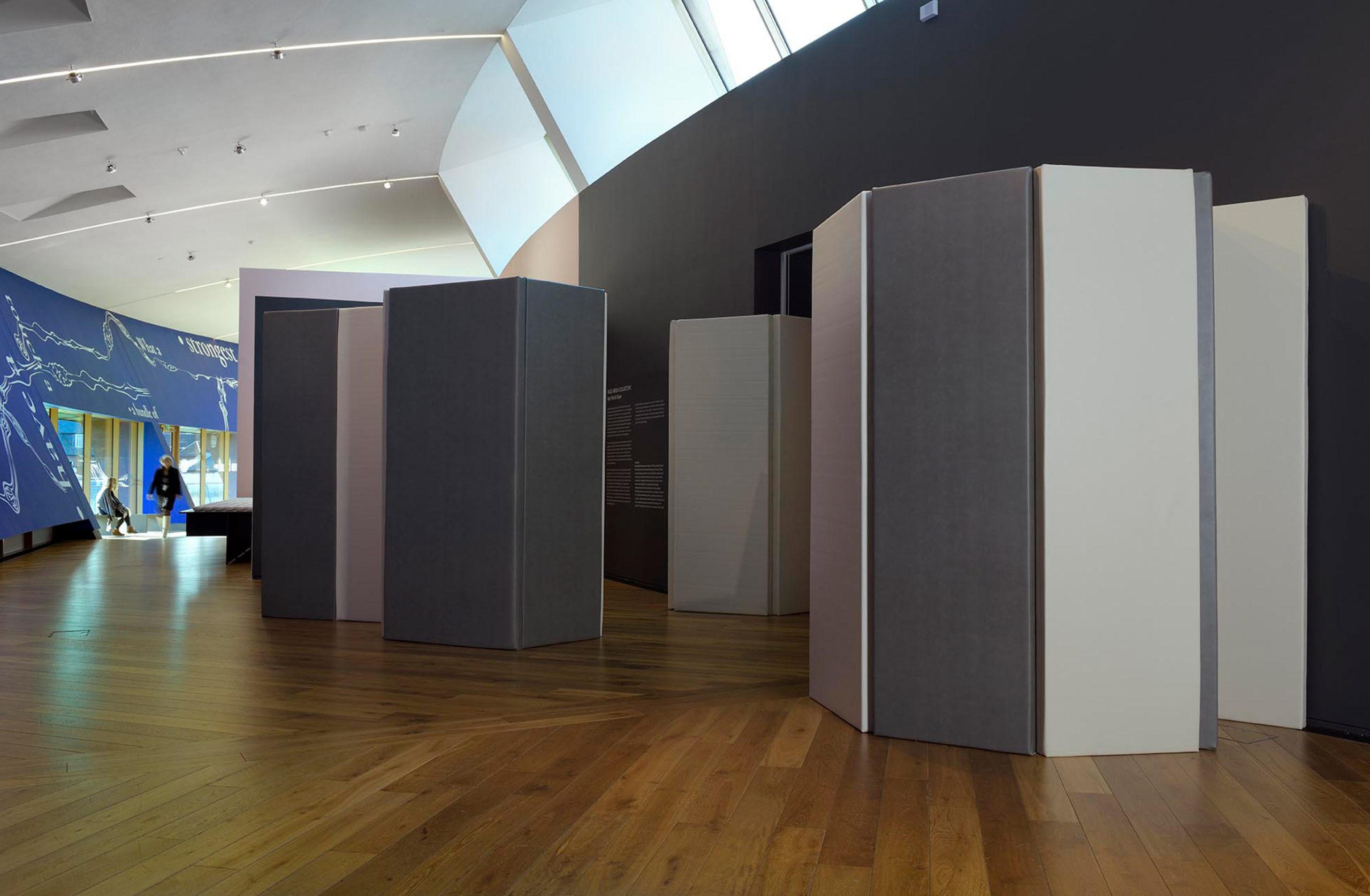
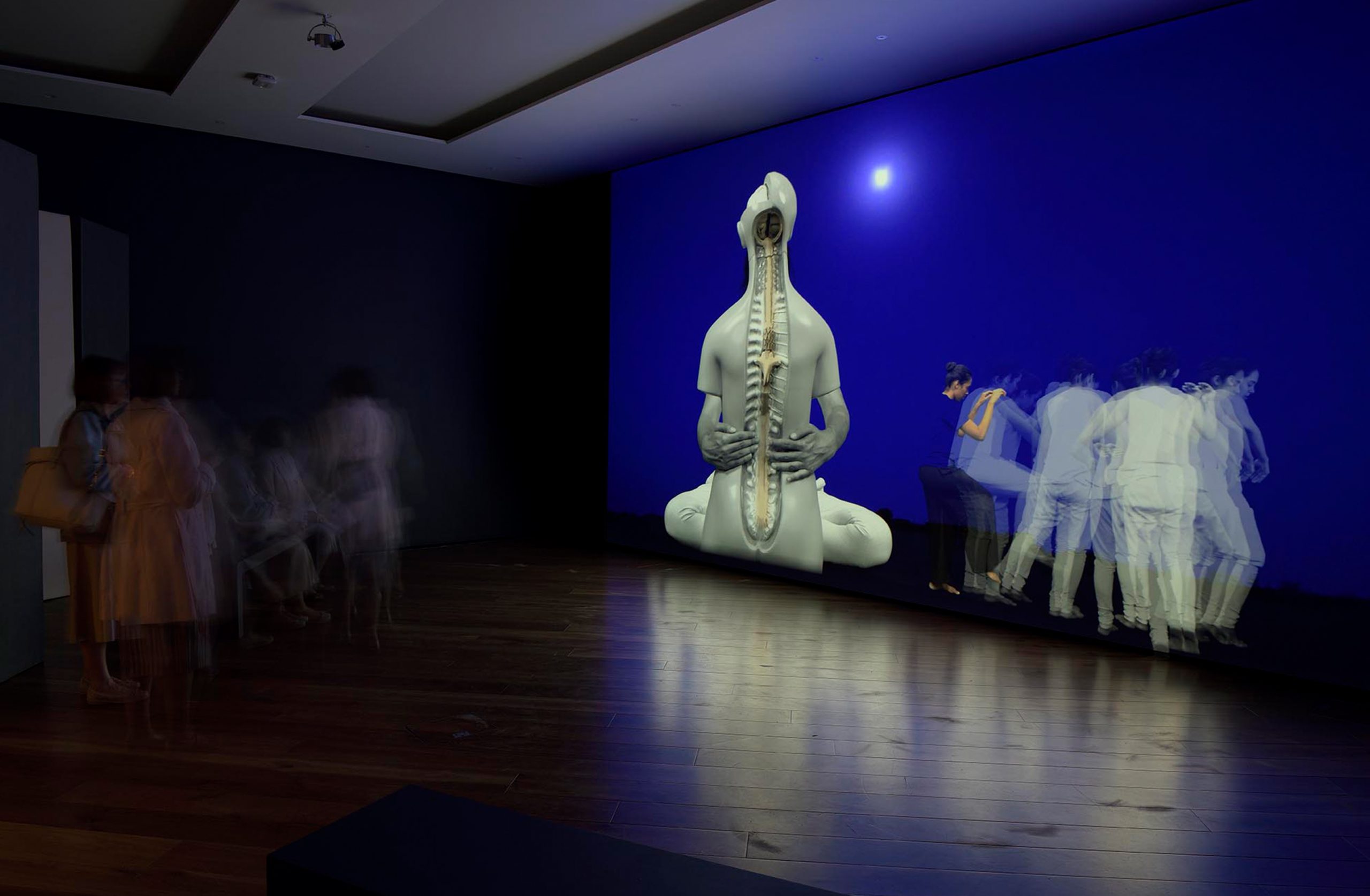



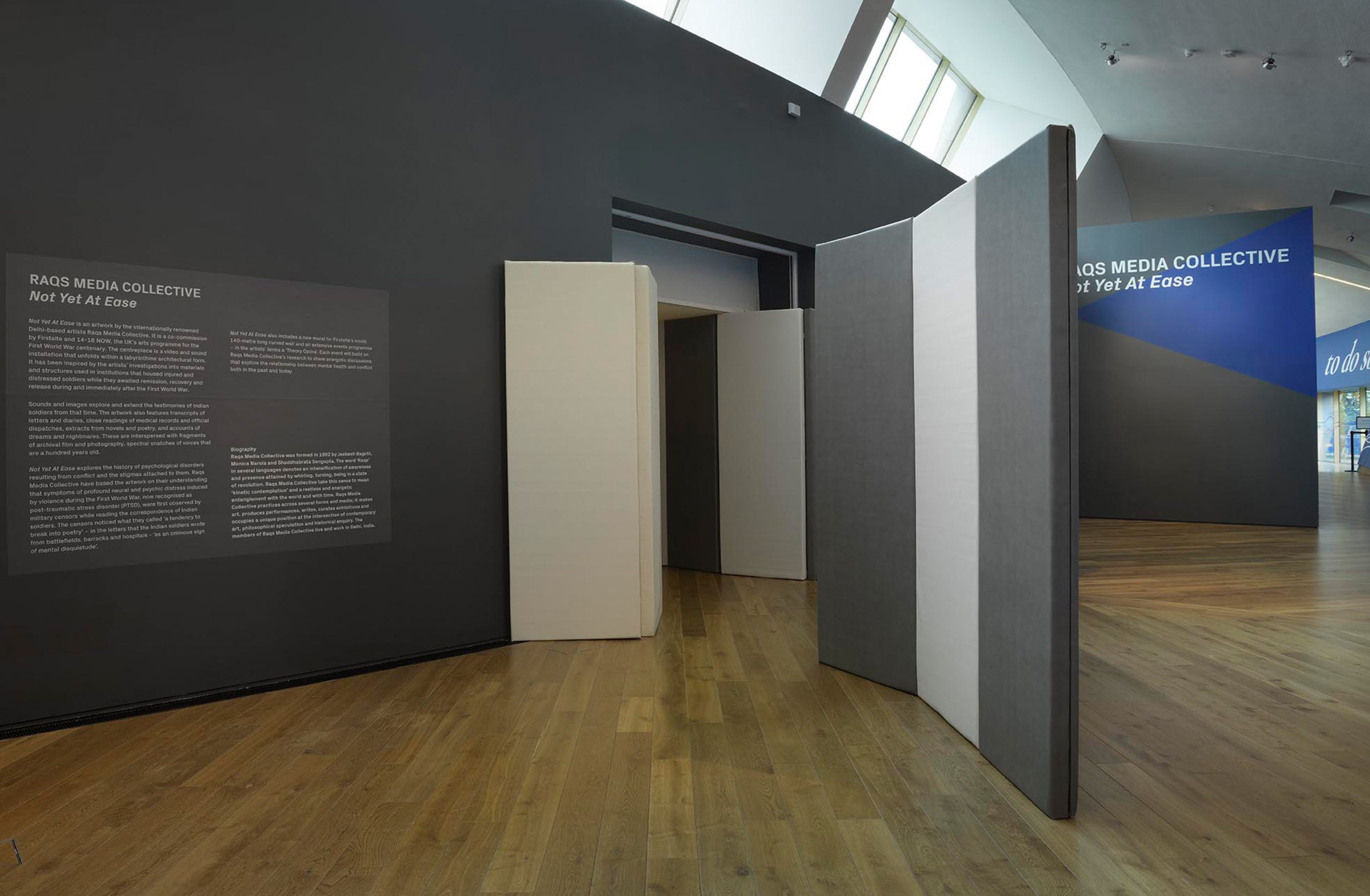



Nerves | 2018-ongoing
Mural. Text and Drawings transferred in Vinyl
on 140 meter long curving wall
Firstsite | Colchester
The bold blue colour that forms the ground of this work is inspired by the Hospital Blues uniform worn by convalescing soldiers in British military hospitals in the early twentieth century. This intense colour field is overlaid with drawings that invoke drawings of nerves and nerve endings as they were understood in 1916. The text fragments are phrases and expressions such as ’a bag of nerves’, ‘a battle of nerves’, ‘a war of nerves’, ‘nerves of steel’ even as they discard the crucial word ‘nerve’. This gesture creates an abstract, almost codex-like pattern that viewers can decipher, and acts as an analogue for the frayed consciousnesses produced by shell-shock on the battlefield.



Spinal
Video, loop 10:24 minutes
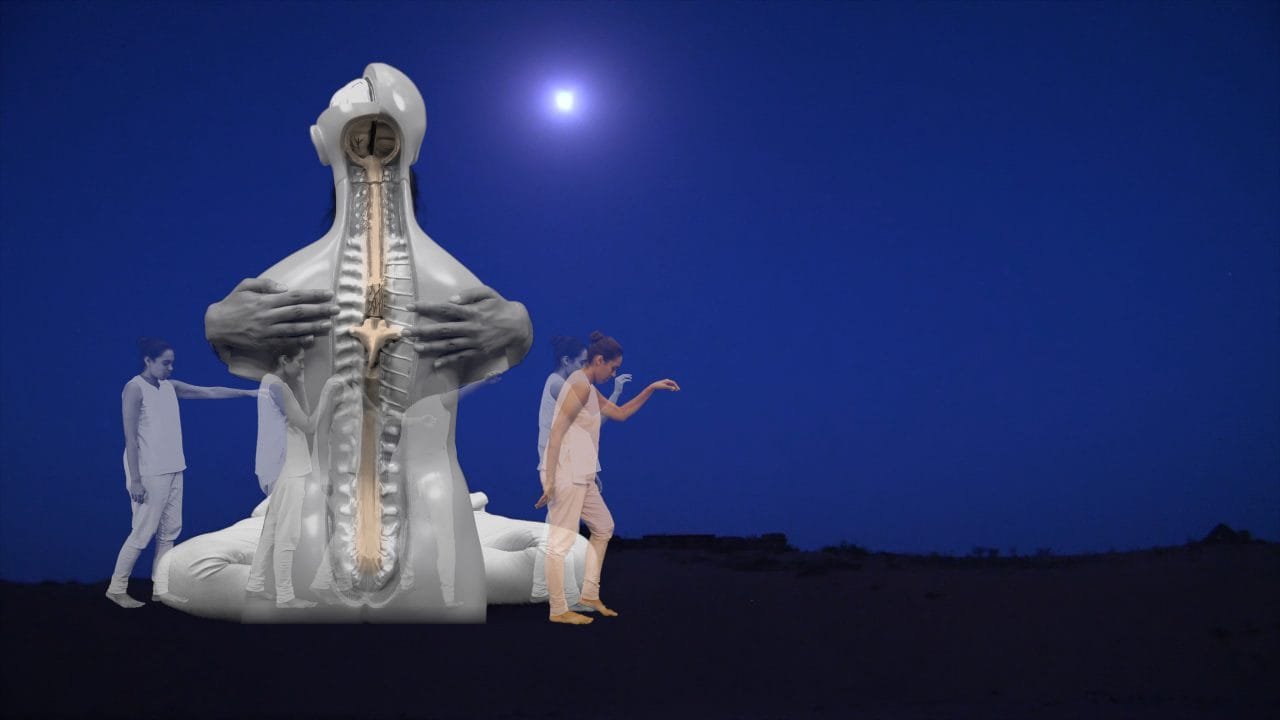
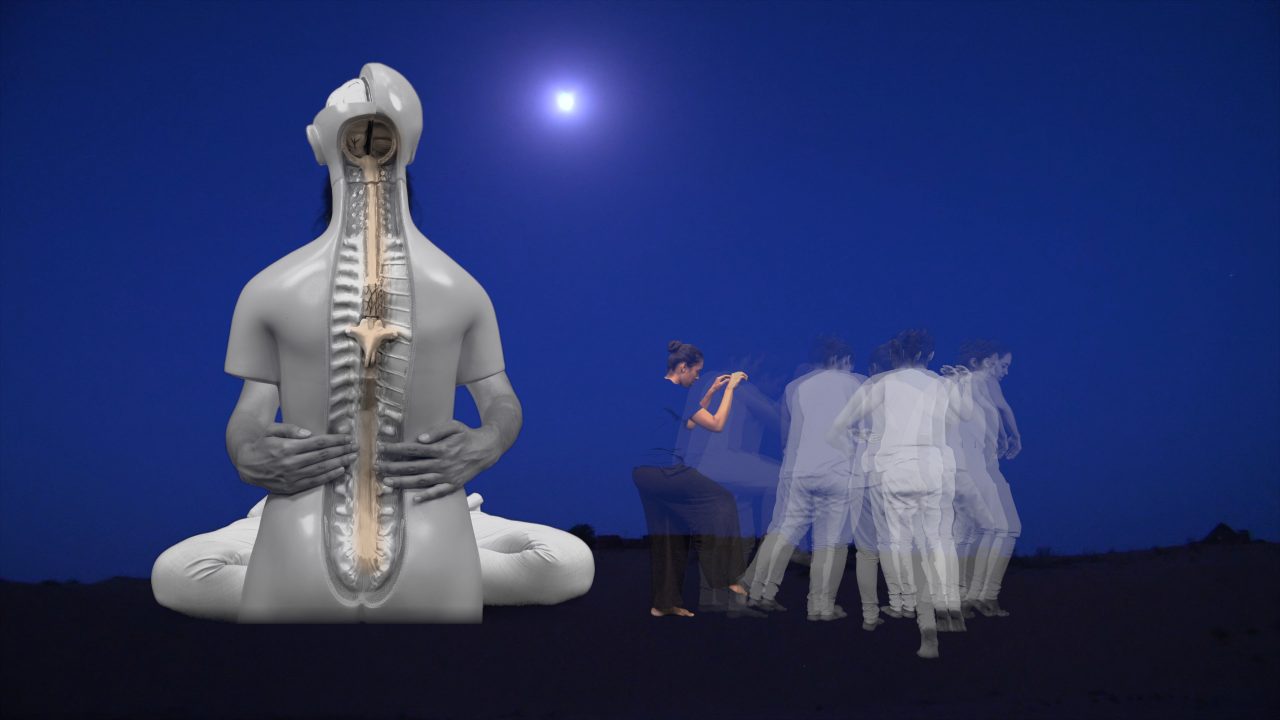
Indian Porter Corps open theatre at Kut at the Imperial War Museum Archives depicts three dancing figures shrouded in white, dancing for a group of men seated around them in an open field. A Sergeant or officer stands with a cane, in the upper right hand corner of the frame. The performers, and the majority of the men, are porters – members of the Indian Labour Corps, who form an important part of the narrative of our installation. In the following videos, elements from the photograph have been treated in multiple ways to reflect upon war, in all its trauma and masquerade.
Three Shadows
Video, loop
Three shadows (of care, rage, and indifference) hover between occurrence and oblivion, not yet at ease.
In ‘Three Shadows, the dancing figures in white have been isolated and animated to render them into ghostly spinning specters. This is in keeping with the fragments we have found in letters from the battlefields by Indian soldiers and non-combatants referring to specters. We have also found a sound recording of an Indian prisoner of war in a camp in Germany speaking about ghosts emanating from the battlefields. Our treatment of the figures in white is reflective of this.
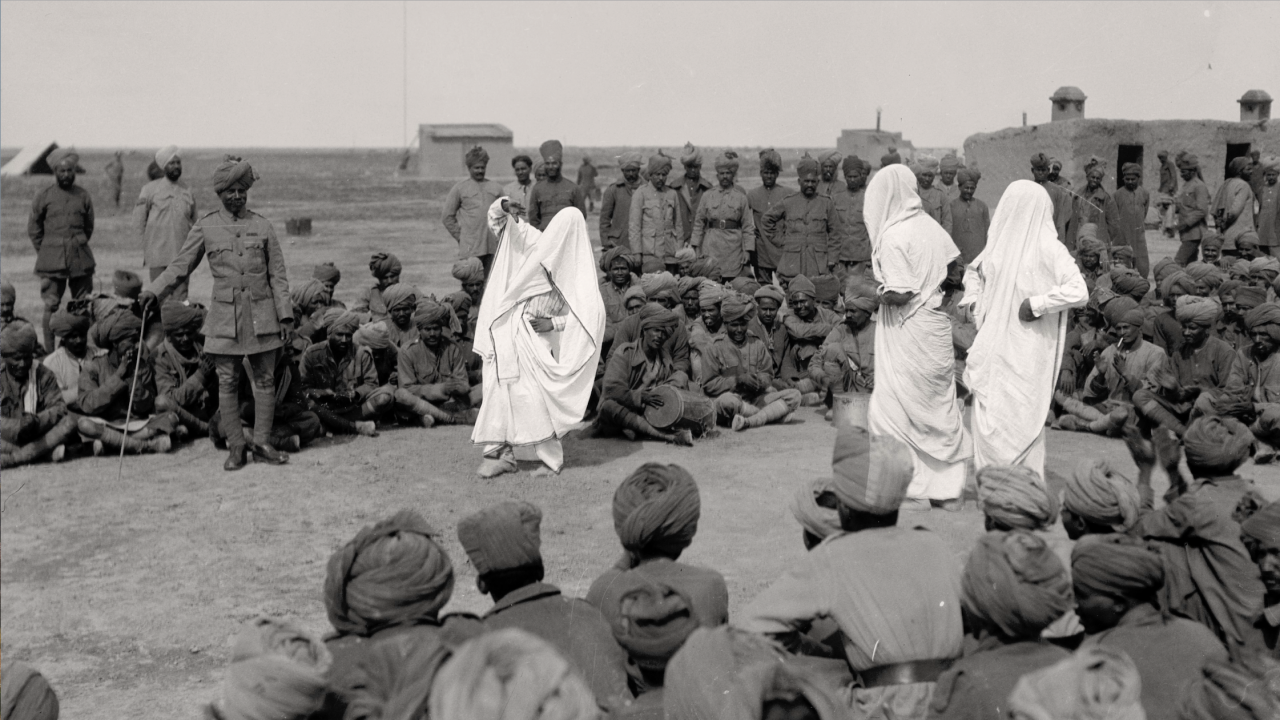
Dreaming
Video, loop 02:19 minutes,
In ‘Dreaming’, the sergeant with the cane is isolated along with a spinning white shrouded figure, seen against what looks like a moon scape as he overlooks a performer who is sleeping.
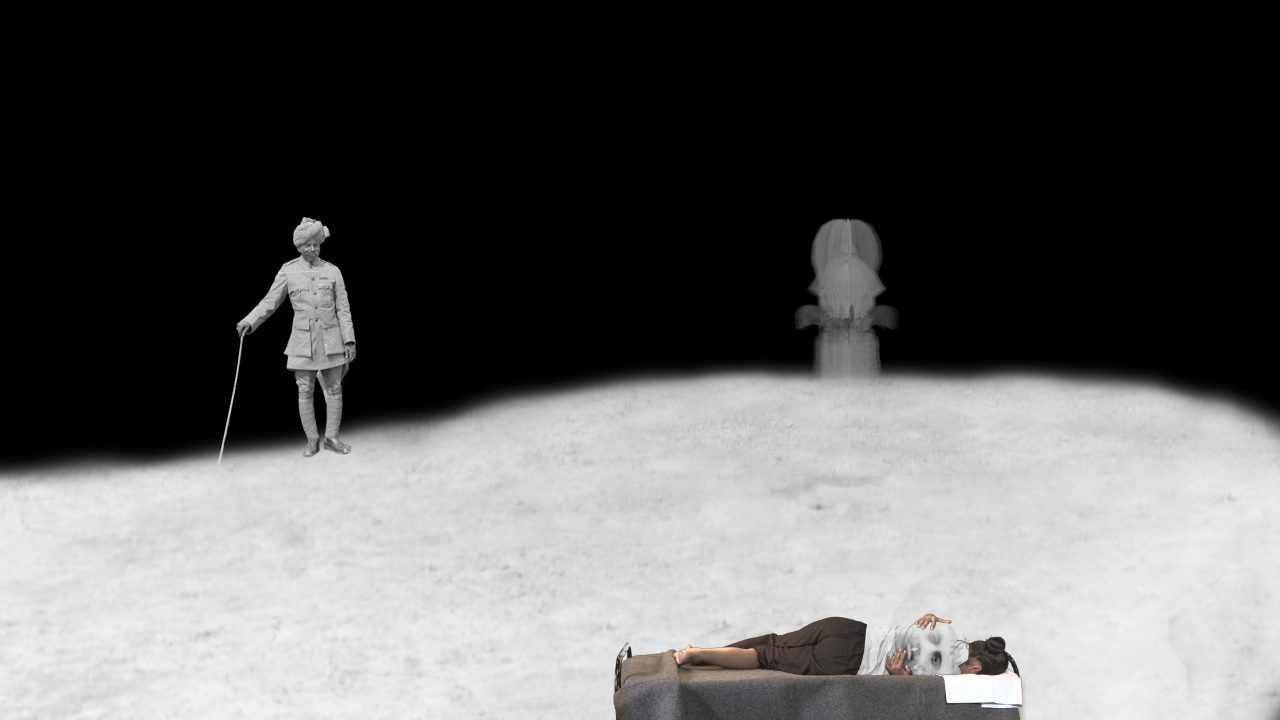
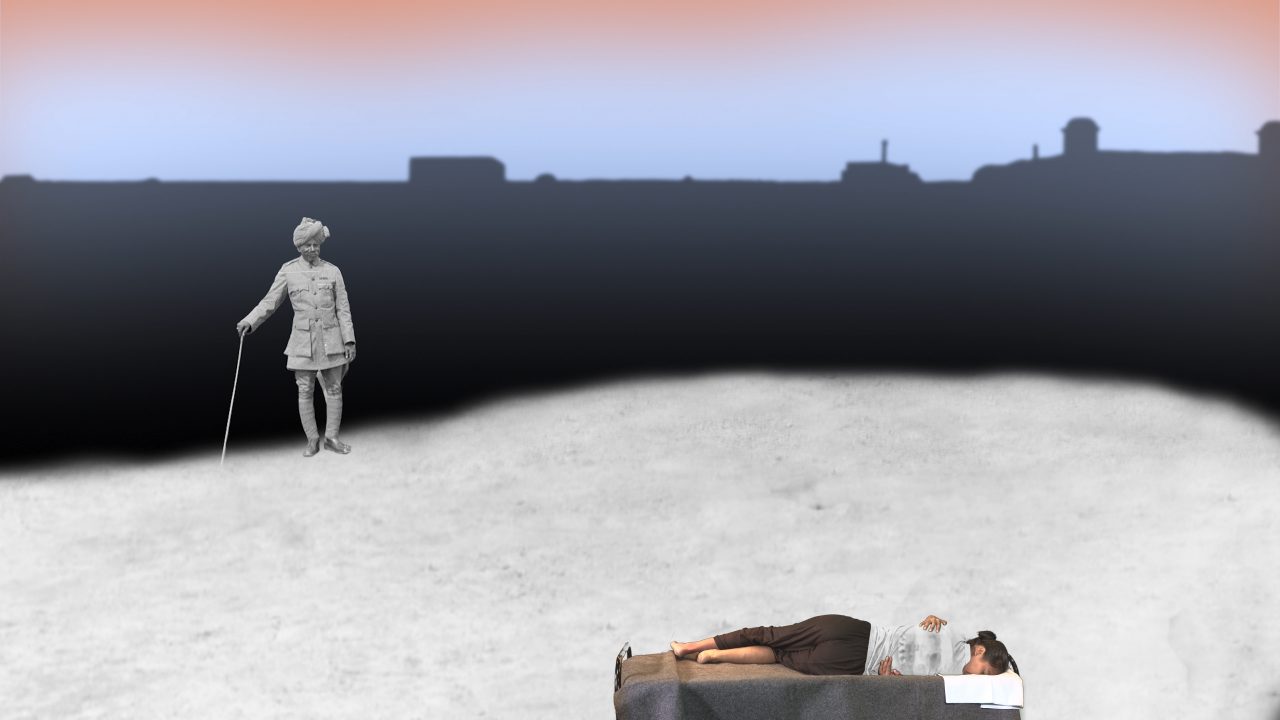
Sweeping
Video, loop
Elements of the ‘landscape’ in the ‘painted backdrop’ have been isolated, coloured and used as a background for a performer sweeping the ground.
Trenches
Video, loop
In ‘Trenches’, a portion of the seated audience from the photograph including a section of the film footage from With the indian Troops at the Front, Part 1, Official Pictures of the British Army in France (especially digging of trenches) is juxtaposed with a recording of a live performer and a swinging chandelier.
Training Camp
Video, loop 02:42 minutes
In ‘Training Camp’, the swinging chandelier is juxtaposed with a film footage of Indian Soldiers of the British Army performing hand-stands during their training camp (sourced from IWM).
Performers of an Indian concert party at the Royal Ordnance Corps theatre, Baghdad, ca.1917 is a posed group photograph of a troupe of Indian soldiers and non combatants near Baghdad, in the Mesopotamia theatre. It is possible that this is a photograph taken during a celebration of a religious holiday. Some of the performers, including the female impersonators, have their faces whitened with flour. A note on the reverse of the original photograph states that the performance lasted from 8pm until 3.30am. Musical accompaniment being provided by tom-tom drums and the small box organ seen on the left of the photograph.
Group Photo
Video, loop
In ‘Group Photo’, the image has been animated to suggest the appearance and disappearance of colour in the faces and costumes of the performers, and also in the painted backdrop that they are pictured against. This is in keeping with the tradition of hand-coloring of photographs that was a very common feature of photographic practice in India at the time. The colours are indicative of the desire for liveliness in a difficult and drab terrain, and the vivid colors in the landscape are suggestive of the aesthetic of the ‘painted backdrop’ that was common both to folk theatre and to popular photography at the time.
These tropes suggest the ways in which many of the Indian soldiers and ‘followers’ made the conditions of war time ‘bearable’ and lived through very difficult conditions with courage, sensitivity and a sign that they had not forgotten what made life beautiful. We have lots of evidence of this attitude in the letters they wrote home, some of which have also made their way into the narrative of our work.
Lalu’s Nightmare
Video, loop 02:19 minutes
In Lalu’s Nightmare, one of the seated figures from the photograph has been isolated (the one wearing goggles, marked with the number ‘5’ on his chest) with an animated shadow behind him. The shadow suggests a multi-armed divinity which draws its inspiration from the reading of a fragment of the War Trilogy, a set of novels about Indian soldiers in the First World War by the acclaimed novelist, Mulk Raj Anand. In the novel, Anand describes a dream experienced by his protagonist, Lalu, an Indian soldier stationed in France in which he sees Kali, the Goddess of the Cremation Ground in Hindu mythology.
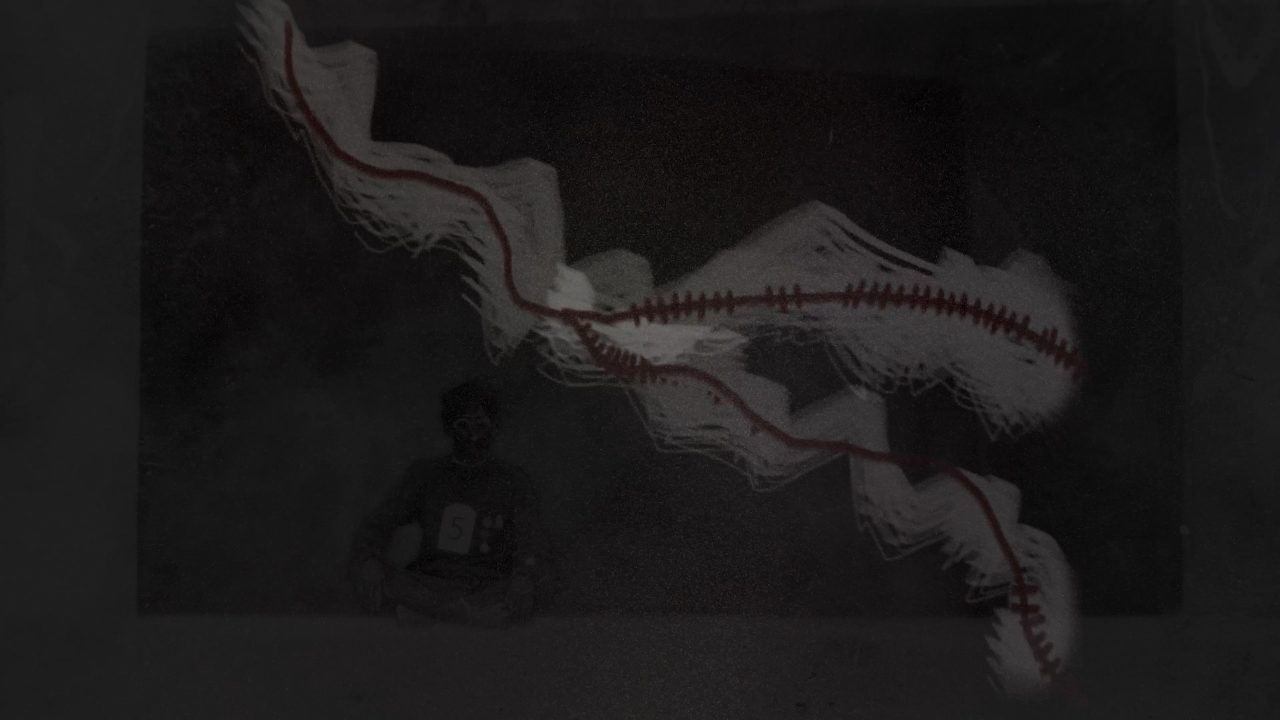
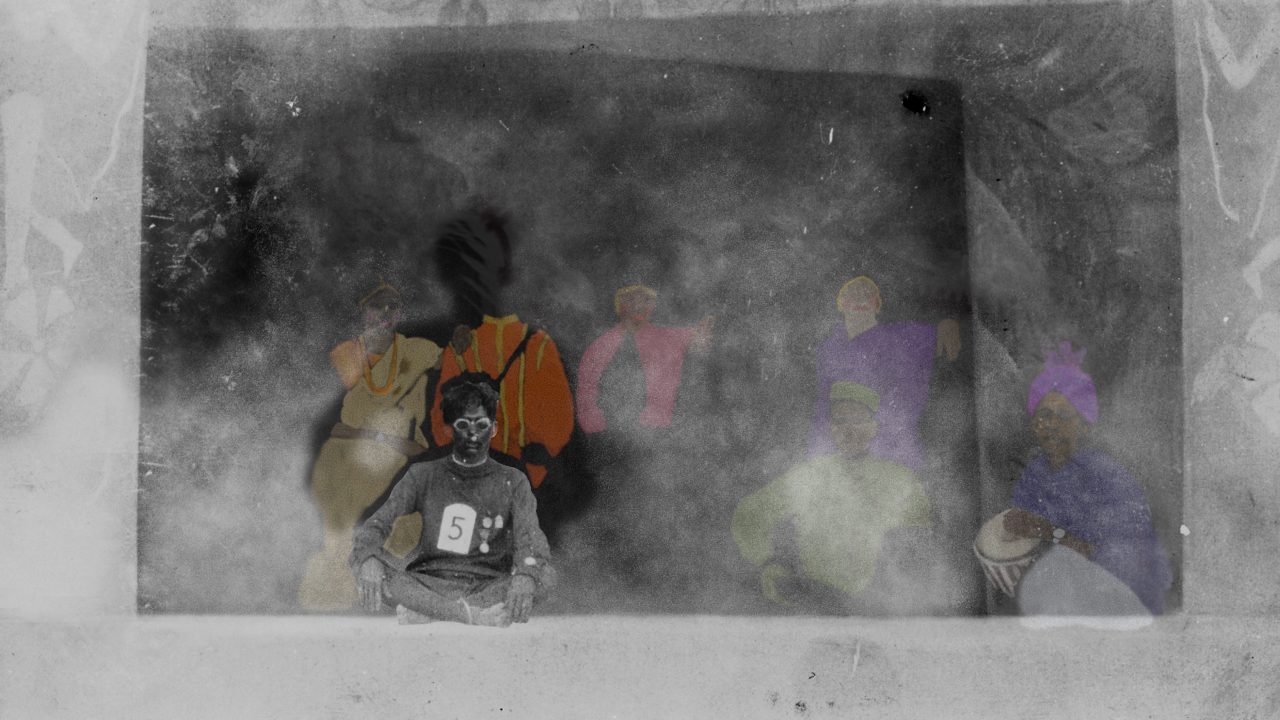
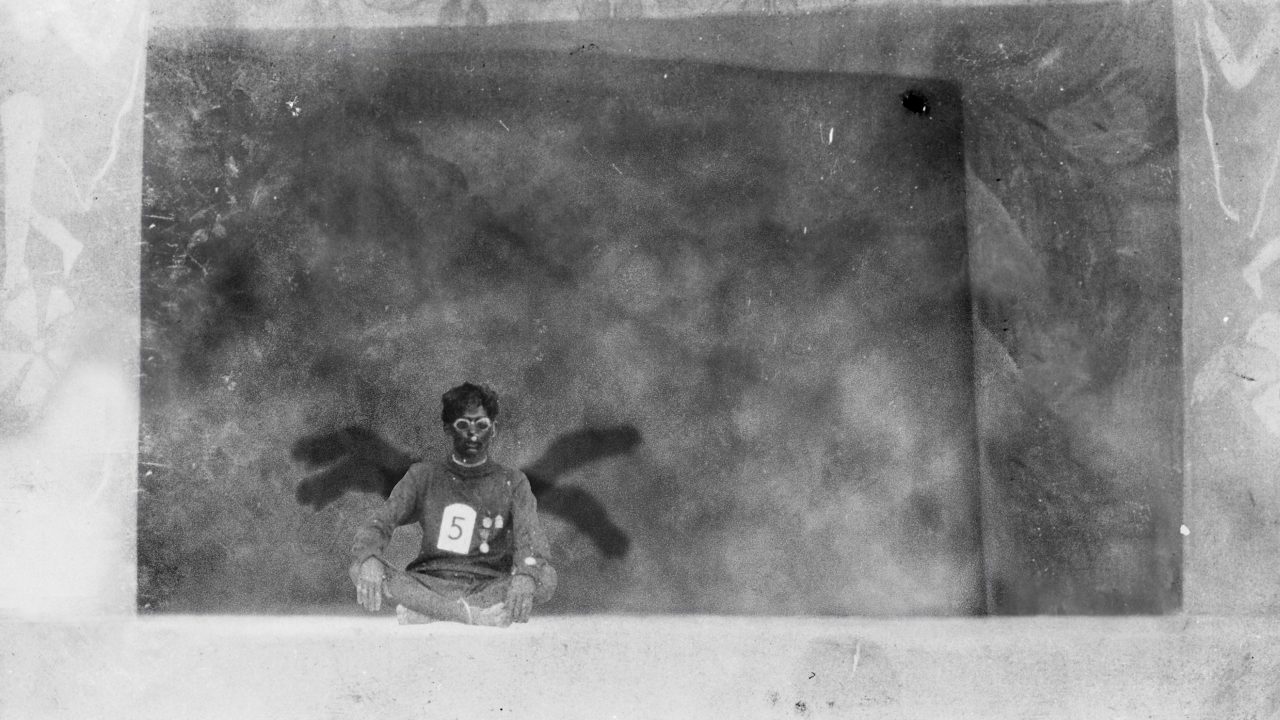
Ghost Floating Legs
Video loop, 6:03 minutes
